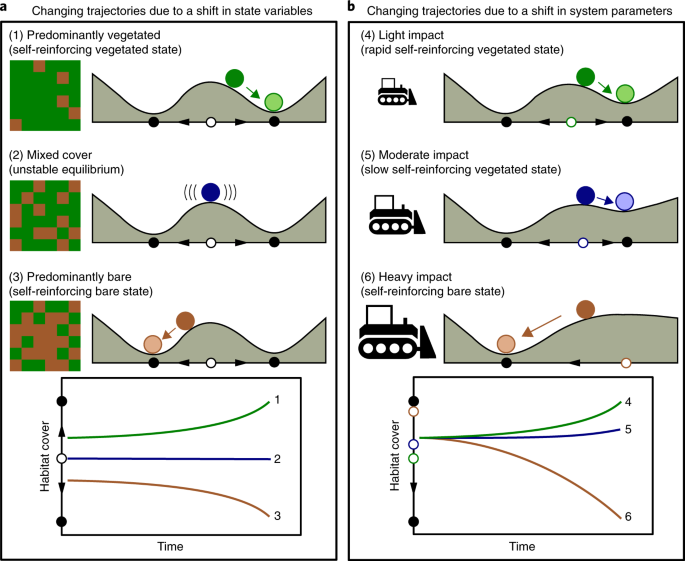Are you tired of your self-propelled lawn mower not moving as smoothly as it used to? The culprit may be a worn-out drive belt. But don’t worry, replacing the drive belt on your self-propelled lawn mower is easier than you think. In this article, we will guide you through the simple steps to replace the drive belt, allowing you to enjoy a smoother and more efficient mowing experience. Say goodbye to sluggish movements and hello to a perfectly manicured lawn!
Checking the Condition of the Drive Belt
Visually Inspecting the Drive Belt
Before diving into the process of replacing the drive belt on your self-propelled lawn mower, it is important to first assess the condition of the current drive belt. Begin by visually inspecting the belt for any signs of wear or damage. Look for cracks, fraying, or any visible signs of deterioration. If you notice any of these issues, it is a clear indication that a replacement is necessary.
Feeling the Tension of the Drive Belt
In addition to a visual inspection, it is crucial to check the tension of the drive belt. A loose or overly tight drive belt can cause poor mower performance and potential damage to other components. To assess the tension, press down gently on the middle section of the belt with your finger. An ideal belt tension should have a slight give but should not feel overly loose or excessively tight. If you notice any issues with tension, it’s time to proceed with the replacement process.
Checking for Signs of Damage
While visually inspecting the drive belt, be on the lookout for specific signs of damage. Pay close attention to any missing chunks, tears, or significant wear on the belt’s surface. Additionally, check for signs of oil or fluid saturation, as this could indicate a more serious underlying issue. By thoroughly examining the drive belt, you can identify any potential problems early on, allowing for prompt replacement and preventing further damage to your lawn mower.
Preparing for Drive Belt Replacement
Gathering the Necessary Tools
Before delving into the drive belt replacement process, ensure you have all the required tools readily available. You will need a socket wrench with the appropriate socket size for your mower, a screwdriver (usually a Phillips or flathead), and possibly pliers or a clamp to assist with removing and adjusting the tension on the belt.
Identifying the Correct Replacement Belt
To ensure a seamless drive belt replacement, it is crucial to identify the correct replacement belt for your specific self-propelled lawn mower model. Consult your lawn mower’s manual for the exact specifications of the drive belt required. Alternatively, you can take note of the model and serial number of your mower and visit a local hardware or home improvement store for assistance in selecting the appropriate belt.
Safety Precautions
Before proceeding with any maintenance or repair work, always prioritize safety. Ensure the engine is off and the mower is on a flat, stable surface. Do not forget to disconnect the spark plug wire to prevent any accidental engine starts during the replacement process. Additionally, wearing protective gloves and eyewear is highly recommended to prevent any potential injuries.
Accessing the Drive Belt
Lifting the Self-Propelled Lawn Mower
To access the drive belt, you will need to lift your self-propelled lawn mower. Begin by finding a secure location where you can safely lift the mower. Ideally, use a sturdy workbench or elevated surface to provide proper stability. Once positioned, carefully lift the front of the lawn mower, ensuring that it is securely balanced and supported.
Removing the Mower Housing
With the mower lifted, the next step is to remove the mower housing. This step may vary depending on the specific model of your self-propelled lawn mower. Refer to your mower’s manual for detailed instructions on the removal process. Generally, it involves removing a few screws or bolts securing the housing to the mower deck. Keep track of any removed components or hardware for reassembly later.
Locating the Drive Belt
After removing the mower housing, you will now have a clear view of the drive belt. Take a moment to familiarize yourself with the belt’s routing and how it connects to the pulleys. This will help ensure a smooth replacement process later on.
Removing the Old Drive Belt
Releasing the Tension
Before removing the old drive belt, you must release the tension. Depending on your mower’s design, this may involve loosening a tensioner pulley or adjusting the position of a belt guide. Refer to your mower’s manual for specific instructions on how to release the tension. By doing so, you will be able to easily slide the belt off the pulleys.
Sliding the Belt Off the Pulleys
Once the tension is released, carefully slide the old drive belt off the pulleys. Take note of the belt’s routing throughout this process, as it will serve as a reference when installing the new belt. Inspect the pulleys for any signs of damage, such as rust or excessive wear, that may warrant further attention or replacement.
Inspecting for Any Additional Damage
While the drive belt is removed, take the opportunity to inspect other components in the drive system. Check the condition of the pulleys, the tensioner assembly, and other associated parts. Replace any damaged or worn components to ensure optimal performance and longevity for your newly installed drive belt.
Installing the New Drive Belt
Placing the Belt on the Pulleys
With the old drive belt removed and any necessary repairs made, it is time to install the new drive belt. Begin by carefully placing the belt onto the designated pulleys, following the same routing as the previous belt. Make sure the belt is fully seated on each pulley, ensuring proper engagement and functionality.
Adjusting the Tension
Once the new drive belt is in place, it is essential to adjust the tension correctly. Refer to your lawn mower’s manual for specific instructions on how to adjust the belt tension for your particular model. Typically, this involves re-engaging the tensioner or adjusting the position of the belt guide. Ensure that the belt has proper tension, neither too loose nor too tight, to ensure optimal performance.
Double-checking the Belt Alignment
After adjusting the tension, take a moment to double-check the belt alignment on the pulleys. Ensure that the belt is sitting properly in the grooves of each pulley and that it is not rubbing against any other parts or surfaces. Correct any misalignment or rubbing issues to prevent premature wear or damage to the drive belt.
Reassembling the Mower Housing
Positioning and Securing the Housing
With the drive belt successfully installed and tensioned, it is time to reassemble the mower housing. Align the housing properly with the mower deck and insert the necessary screws or bolts to secure it in place. Make sure the housing is aligned correctly to prevent any interference with the drive belt or other internal components.
Reattaching Any Removed Components
Once the housing is secured, it is important to reattach any components that were removed earlier in the process. Use the notes or documentation you took during disassembly to guide you in correctly reattaching each part. Ensure that all screws or bolts are tightened securely but not overtightened, as this can cause damage to the housing or other components.
Verifying Proper Reassembly
Before moving on to the next steps, take a moment to confirm that all components are properly reassembled. Ensure that there are no loose or dangling parts and that everything is securely in place. This will help prevent any potential issues or complications during the operation of your self-propelled lawn mower.
Testing the Drive Belt
Engaging the Self-Propelled Function
With the mower fully reassembled, it is time to test the newly installed drive belt. Start by engaging the self-propelled function of your lawn mower and listen for any unusual noises or vibrations. Observe the movement of the wheels and ensure that the self-propelled feature is functioning correctly.
Observing the Belt’s Performance
As the self-propelled function is engaged, pay close attention to the drive belt’s performance. Ensure that it remains properly seated on the pulleys and does not slip or come off during operation. Watch for any signs of irregular movement or excessive wear on the belt. If you notice any issues, it may be necessary to make further adjustments or recheck the tension.
Making Corrections if Necessary
If any issues arise during the testing phase, such as belt slipping or abnormal noises, it is important to address them promptly. Double-check the tension and alignment of the drive belt, making any necessary corrections. If the issues persist, refer to the troubleshooting section of this article or consult a professional for further assistance.
Routine Maintenance for Drive Belt
Regular Inspection
To ensure the longevity and optimal performance of your drive belt, it is essential to include regular inspections in your lawn mower maintenance routine. Periodically inspect the drive belt for any signs of wear, damage, or misalignment. Catching potential issues early on will help avoid costly repairs or sudden belt failures, ensuring a smoothly operating self-propelled lawn mower.
Cleaning and Lubrication
To maintain the drive belt’s performance and prevent premature wear, it is recommended to clean and lubricate the pulleys and belt periodically. Remove any accumulated debris or grass clippings from the pulleys, ensuring they rotate freely. Apply a suitable belt and pulley lubricant to minimize friction and extend the life of the drive belt.
Proper Storage
During periods when your self-propelled lawn mower is not in use, it is necessary to store it appropriately to prevent damage to the drive belt. Clean the mower thoroughly, removing any grass clippings or debris that may contribute to belt deterioration. Store the mower in a dry, covered area to protect it from the elements, further preserving your drive belt’s condition.
Common Issues and Troubleshooting
Belt Slipping or Coming Off
If you experience issues with the drive belt slipping or coming off during operation, it may be due to incorrect tension, misalignment, or worn pulleys. Start by checking the tension and making necessary adjustments. Inspect the pulleys for any signs of wear or damage and replace if necessary. Ensure the belt routing is correct and that there are no obstructions or interference causing the slipping or dislodging.
Excessive Noise from the Belt
Unusual or excessive noise from the drive belt can indicate misalignment, poor tension, or a damaged belt. Double-check the alignment, tension, and condition of the belt. Make any necessary adjustments or replacements as needed. Ensure that the belt is not rubbing against other components or surfaces that could contribute to the noise.
Drive System Malfunction
If your self-propelled function or drive system is not working correctly after replacing the drive belt, it may be indicative of an underlying issue. Check for any loose connections, damaged cables, or worn components. If the problem persists, it is recommended to consult a professional technician or the manufacturer for further assistance.
Seeking Professional Assistance
When to Consult a Professional
While replacing the drive belt on a self-propelled lawn mower can often be done by a capable DIY enthusiast, there are certain situations where professional assistance may be warranted. If you are unsure about any aspect of the replacement process, encounter unexpected complications, or lack the necessary tools or expertise, it is best to consult a professional technician. Additionally, if your lawn mower is still under warranty, it is advisable to seek authorized service to avoid voiding the warranty.
Choosing a Qualified Technician
When seeking professional assistance for drive belt replacement or any other maintenance tasks, it is important to choose a qualified technician. Look for reputable lawn mower repair shops or authorized service centers in your area. Check for certifications or training that the technicians have undergone, ensuring they have the necessary expertise to work on your specific mower model.
Providing Necessary Information
When consulting a professional technician, it is essential to provide them with all the necessary information to accurately diagnose and address the issue. Inform them of the specific problem you are experiencing, any relevant symptoms or sounds, and any steps you have already taken to resolve the issue. Additionally, provide them with the make, model, and serial number of your self-propelled lawn mower to assist in their assessment and ensure they have the appropriate knowledge and parts for the job.





